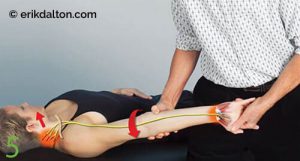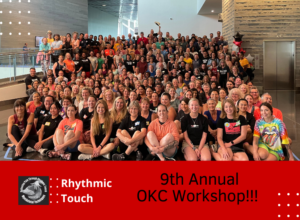I’ve written about the changes I’ve experienced with osteopathic treatment here: https://erikdalton.com/blog/forward-head-posture-part-1/

Brain Connectivity Changes after Osteopathic Manipulative Treatment: A Randomized Manual Placebo-Controlled Trial
Osteopathic Manipulative Treatment (OMT) is a whole-body intervention mainly focused on correcting the somatic dysfunctions present in different regions of the body. Osteopathic research to date has mostly been concerned with various clinical conditions such as musculoskeletal disorders, and primary headache. The main advantage for patients is the effective relief of acute and chronic pain. However, osteopathic patients are receiving osteopathic care and reporting improvements for other non-musculoskeletal complaints. Indeed, OMT was proved effective on conditions and disorders beyond the sensory and motor system, including the reduction of hospitalization length in a large population of preterm infants, effects on anxiety and fatigue in people with multiple sclerosis, and on autonomic and neuroendocrine responses. The neurophysiological effects underlying clinical improvements are still under debate.
Although models explaining the therapeutic effects of OMT include potential brain mechanisms, few studies have been carried out to investigate brain mechanism changes after OMT.
The present study aimed to analyze and compare brain functional connectivity before, immediately after, and 3 days after OMT treatments, and showed a distinct functional and reversible connectivity re-arrangement of the supraspinal locomotor network, consisting of the premotor cortex, basal ganglia, and midline cerebellum, as well as the emotional/autonomic network, with specific activation of the amygdala.
This 2020 research project by Marco Tramontano provides the first preliminary evidence of brain network connectivity changes due to OMT, opening further insights into potential effects of OMT on brain functional activity. Moreover, it suggests future investigations in this unexplored field, particularly on symptomatic subjects.
Reference: Tramontano, Marco et al. “Brain Connectivity Changes after Osteopathic Manipulative Treatment: A Randomized Manual Placebo-Controlled Trial.” Brain sciences vol. 10,12 969. 11 Dec. 2020, doi:10.3390/brainsci10120969
On sale this week only!
Save 25% off the "Dalton Technique Treasures" eCourse
The “Dalton Technique Treasures” eLearning course is a compilation of some of Erik’s favorite Myoskeletal Alignment Techniques (MAT). Learn MAT techniques to assess and address specific sports injuries, structural misalignment, nervous system overload, and overuse conditions. ON SALE UNTIL July 29th! Get Lifetime Access: As in all our eLearning courses, you get easy access to the course online and there is no expiry date.






